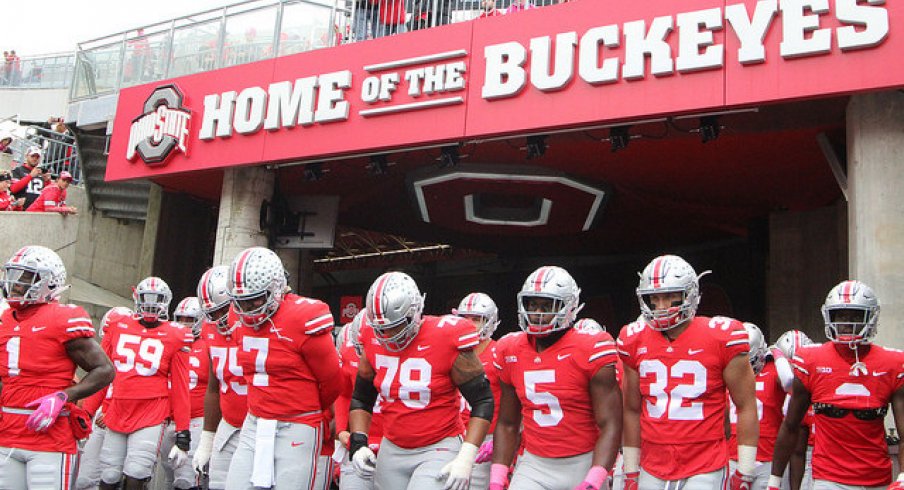It may have been closer than expected, but a win is a win.
Once Dwayne Haskins laced a 27 pass right into the hands of K.J. Hill with just over 2 minutes left in the game, that was a phrase you were likely to hear all over Columbus. That throw capped off a seven-play, 69 yard drive that secured a 30-14 victory for the Buckeyes over the Golden Gophers. With the win, Ohio State extends its win streak to 10.
How did Ohio State win, and how did Minnesota manage to keep it so close? Read on for the three key statistics that led to Saturday's outcome.
Dwayne Haskins dominates again with 412 passing yards, 9.4 yards per pass
The Ohio State passing game is alive and well.
Dwayne Haskins has had back to back monster games of over 400 yards. On Saturday, Haskins totaled 412 yards, and once again was 33/44 on passing. With 9.4 yards per pass, Ohio State was covering some serious ground almost every time they elected to throw the ball. Add three touchdowns into the mix, and it was another solid, Heisman-worthy performance from the Buckeye signal caller.
On the receiving end of things, K.J. Hill had himself a day. With 9 receptions, 187 yards, and 2 touchdowns, the Buckeye receiver simply could not be stopped. His first touchdown reception even came off an Odell Beckham-esque one handed grab. In the end, Hill spearheaded what was an excellent day overall for the Ohio State receiving corps.
Buckeye rushing attack struggles, finishes under 100 yards for first time since 2017 CFP Playoff
It was a good thing the Buckeye air attack was as potent as it was, because Ohio State could get nothing going on the ground. The OSU rushing attack only mustered 92 yards on 32 attempts with a meager 2.9 yards per carry. In comparison, the Golden Gophers accumulated 178 rushing yards on nearly the same amount of carries (33), averaging a solid 5.4 yards per carry.
Mike Weber was the leading rusher for the Buckeyes with a scant 51 yards on 13 attempts. J.K. Dobbins did not fare much better, rushing for only 35 yards on 10 attempts. The Ohio State rushing attack has been on a downward trend all season, and while the Bucks did secure a victory, the inability to run the ball is concerning.
Ohio State wins the turnover battle, forces one fumble and two interceptions
Statistically, the Ohio State defense played well. Especially so when it came to turnovers.
Kendall Sheffield was responsible for the first turnover with an interception on Minnesota's first possession of the game. The Buckeye offense then drove 83 yards and settled for a 21 yard field goal. Midway through the second quarter, OSU forced a second Golden Gopher turnover with a fumble forced by Shaun Wade and recovered by Jeffrey Okudah. Ohio State then capitalized with a 76 yard touchdown drive. The final turnover came early in the fourth quarter with an Isaiah Pryor interception. Ohio State was unable to score any points as a result of the turnover.
After having the secondary struggle last week versus Indiana, it was nice to see the unit come together for a decent showing this week. In addition to the pair of interceptions, the passing defense allowed 218 passing yards, nearly 100 yards less than the week before. While there were several other aspects of the defense that could have been improved, it was still a respectable performance by the secondary and was a vital aspect of Ohio State's 30-14 win over Minnesota. With the win, the Buckeyes remain undefeated and will look forward to playing Purdue on the road next week.


